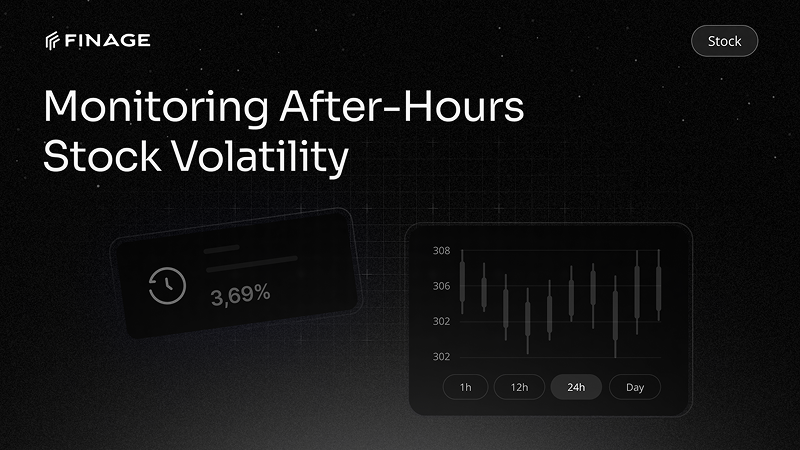The Best Practices for Handling API Errors & Rate Limits in Trading Apps
6 min read • March 12, 2025

Introduction
In the fast-paced world of trading applications, seamless access to real-time financial data is critical. Traders, fintech developers, and financial institutions rely on financial data APIs to power their trading strategies, market analysis, and automated systems. However, managing API errors and rate limits effectively is just as important as retrieving data itself. Poor API management can lead to delays, missed trading opportunities, and even application downtime, affecting user experience and profitability.
Handling API errors correctly ensures that trading applications remain robust, resilient, and adaptable to changing market conditions. Rate limits, imposed by API providers, are designed to prevent excessive requests and ensure fair usage of resources. Failure to manage these limits can result in blocked requests, causing disruptions in live trading environments.
At Finage, we provide high-performance financial data APIs tailored for fintech developers and traders, offering reliable access to market data while helping users optimize their API usage. This guide explores best practices for handling API errors and rate limits effectively, ensuring trading applications run smoothly and efficiently.
Contents
- Understanding API Errors in Trading Applications
- Common Causes of API Failures and How to Prevent Them
- Managing Rate Limits to Ensure Continuous Data Access
- Implementing Retry Mechanisms and Error Handling Strategies
- Optimizing API Requests for Better Performance
- How Finage Helps Traders and Developers Handle API Errors and Limits
- Final Thoughts
Understanding API Errors in Trading Applications
APIs act as the bridge between trading applications and financial market data. When an API request fails, it can disrupt a trading strategy, delay order execution, or cause data inconsistencies. API errors can occur for various reasons, including incorrect request formatting, expired authentication tokens, or network instability.
Developers building trading applications must anticipate these errors and implement error-handling mechanisms to prevent unexpected application failures. By properly handling errors, applications can recover gracefully from issues without compromising performance or user experience. Having a robust error-handling framework ensures that traders can rely on accurate and uninterrupted market data, even when minor disruptions occur.
Common Causes of API Failures and How to Prevent Them
API failures can stem from multiple factors, including incorrect API calls, server overload, or network downtime. One of the most common errors occurs when an API request is structured incorrectly, leading to issues such as invalid parameters or missing authentication credentials. Developers must carefully follow API documentation and validate request parameters to avoid these errors.
Server overload can also contribute to API failures, particularly during high market volatility. When trading volumes surge, excessive API requests can strain infrastructure, leading to temporary outages. Implementing caching mechanisms for frequently accessed data can reduce the number of redundant requests, improving overall application stability.
Network instability is another challenge that trading applications face. Ensuring a reliable internet connection and using fallback mechanisms to switch between multiple data sources can help mitigate disruptions caused by connectivity issues.
Managing Rate Limits to Ensure Continuous Data Access
API rate limits are in place to ensure fair usage of resources and prevent excessive data requests. Each API provider sets a maximum number of allowed requests per second, minute, or hour. When these limits are exceeded, additional requests may be blocked or delayed, impacting the performance of trading applications.
Traders and developers must carefully monitor API usage to stay within rate limits. Implementing request batching allows multiple data points to be retrieved in a single request, optimizing API usage while reducing the risk of hitting rate limits. Additionally, developers should prioritize essential API calls and avoid making unnecessary requests that could lead to restrictions.
Using WebSockets for real-time data streaming instead of constantly polling APIs for updates can also help manage rate limits effectively. WebSockets establish a continuous connection with the server, delivering real-time data without requiring repeated API calls, making them an ideal solution for high-frequency trading applications.
Implementing Retry Mechanisms and Error Handling Strategies
To maintain a smooth trading experience, developers must implement retry mechanisms that automatically handle failed API requests. When a request encounters an error, the application should wait before retrying the request, following an exponential backoff strategy to prevent overwhelming the server.
Exponential backoff gradually increases the time between retries, ensuring that API requests do not flood the server with repeated failures. This approach helps applications recover from temporary outages while respecting rate limits and preventing unnecessary API usage.
Handling different types of API errors appropriately is crucial. If a request fails due to an authentication issue, the application should attempt to refresh the API key or access token before retrying. If an error is related to rate limits, the application should delay requests until the limit resets, preventing unnecessary failures.
Optimizing API Requests for Better Performance
Efficient API usage is key to maintaining the stability and speed of trading applications. Optimizing API requests by reducing redundant calls and leveraging caching mechanisms can significantly improve performance. Instead of making separate API calls for each stock symbol or currency pair, traders can retrieve multiple data points in a single request, minimizing the number of requests sent to the server.
Storing frequently accessed data locally within the application helps reduce the number of repetitive API calls. For example, retrieving stock prices every few seconds instead of making multiple requests per second can prevent unnecessary strain on API usage limits.
Developers should also implement logging and monitoring tools to track API request success rates, error occurrences, and response times. By analyzing API usage patterns, fintech developers can identify inefficiencies and adjust their applications to optimize performance and reliability.
How Finage Helps Traders and Developers Handle API Errors and Limits
At Finage, we offer financial data API solutions designed to ensure uninterrupted access to stock, forex, and cryptocurrency market data. Our API infrastructure is built to handle high-frequency requests while maintaining stability, providing traders with reliable market insights in real time.
To help traders manage API errors and rate limits effectively, Finage provides detailed documentation, response status codes, and guidance on error-handling best practices. Our API solutions support WebSockets for real-time streaming, reducing the need for excessive polling and minimizing rate-limit issues.
Additionally, our API includes transparent rate-limit monitoring, allowing users to track their request quotas and plan their API usage accordingly. With our scalable solutions, developers can retrieve real-time and historical financial data without worrying about disruptions caused by API errors or access restrictions.
Final Thoughts
Handling API errors and rate limits efficiently is crucial for maintaining the reliability and performance of trading applications. By implementing proper error-handling mechanisms, managing API rate limits, and optimizing requests, fintech developers can ensure that their applications remain stable even during high market volatility.
Finage provides robust financial data APIs that empower traders, developers, and financial institutions with real-time and historical market insights. With our scalable infrastructure, low-latency data delivery, and support for WebSockets, Finage ensures that trading applications operate seamlessly without disruption. As financial markets continue to evolve, having a well-optimized API strategy will be key to staying ahead in the fast-moving world of fintech and trading.
You can get your Real-Time and Historical Market Data with a free API key.
Build with us today!
Claim Your Free API Key Today
Access stock, forex and crypto market data with a free API key—no credit card required.

Stay Informed, Stay Ahead
Finage Blog: Data-Driven Insights & Ideas
Discover company news, announcements, updates, guides and more


